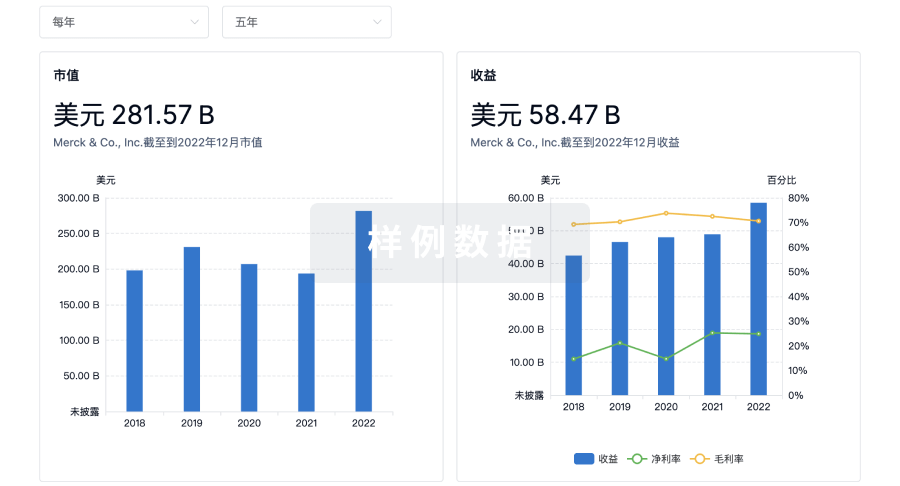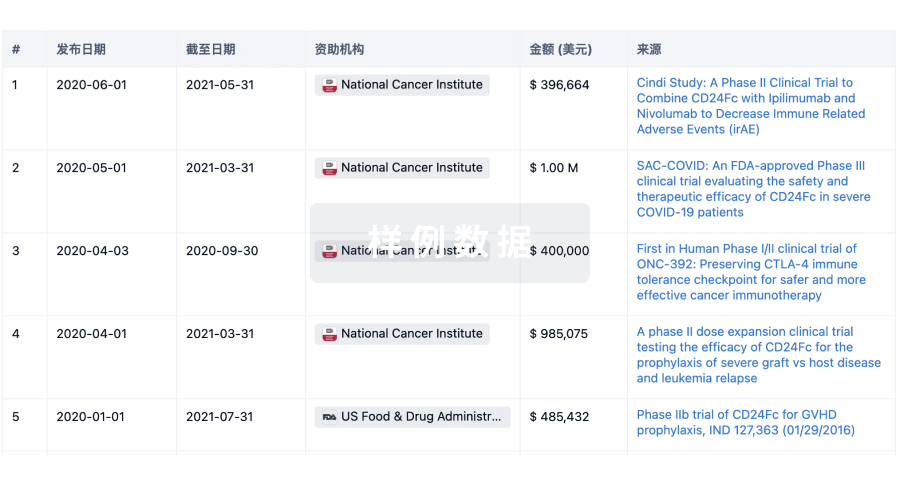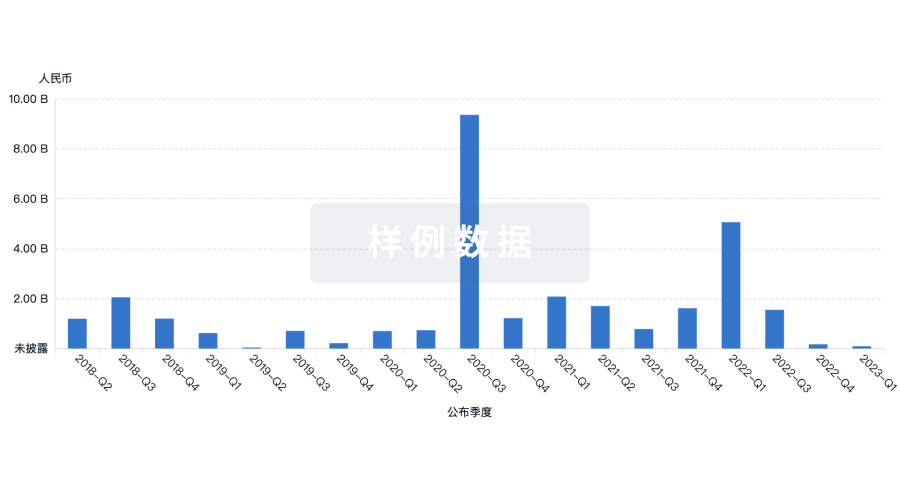预约演示
更新于:2025-09-09

BeOne Medicines Ltd.
更新于:2025-09-09
概览
标签
肿瘤
血液及淋巴系统疾病
免疫系统疾病
小分子化药
单克隆抗体
蛋白水解靶向嵌合体(PROTAC)
疾病领域得分
一眼洞穿机构专注的疾病领域
暂无数据
技术平台
公司药物应用最多的技术
暂无数据
靶点
公司最常开发的靶点
暂无数据
| 排名前五的药物类型 | 数量 |
|---|---|
| 小分子化药 | 35 |
| 单克隆抗体 | 15 |
| ADC | 8 |
| 双特异性T细胞结合器 | 7 |
| 蛋白水解靶向嵌合体(PROTAC) | 7 |
关联
95
项与 BeOne Medicines Ltd. 相关的药物作用机制 MEK1抑制剂 [+1] |
在研适应症 |
最高研发阶段批准上市 |
首次获批国家/地区 美国 |
首次获批日期2025-02-11 |
靶点 |
作用机制 HER2拮抗剂 [+1] |
在研适应症 |
非在研适应症- |
最高研发阶段批准上市 |
首次获批国家/地区 美国 |
首次获批日期2024-11-20 |
作用机制 CD3刺激剂 [+1] |
在研机构 |
原研机构 |
非在研适应症- |
最高研发阶段批准上市 |
首次获批国家/地区 美国 |
首次获批日期2024-05-16 |
280
项与 BeOne Medicines Ltd. 相关的临床试验NCT07136077
A Phase 2 Trial of Fruquintinib and Tislelizumab in ctDNA-defined Minimal Residual Disease in Colorectal Cancer After Completion of Adjuvant Chemotherapy
To find out if a combination of fruquintinib and tislelizumab can control CRC in patients who have received treatment for the disease but still have "positive" ctDNA tests for MRD (meaning there is evidence of MRD based on this test).
开始日期2026-02-05 |
NCT06973187
A Phase 3, Open-Label, Randomized Study to Evaluate the Safety and Efficacy of BGB-16673 Compared to Pirtobrutinib in Patients With Relapsed/Refractory Chronic Lymphocytic Leukemia or Small Lymphocytic Lymphoma
The purpose of this study is to evaluate the efficacy and safety of BGB-16673 alone compared with pirtobrutinib in patients with relapsed or refractory (R/R) chronic lymphocytic leukemia (CLL) or small lymphocytic lymphoma (SLL) who had been previously treated with a covalent Bruton tyrosine kinase inhibitor (cBTKi).
开始日期2025-09-01 |
申办/合作机构 |
NCT07141511
A Phase 1, Single-dose, Open-label, Randomized, Crossover Study in Healthy Adult Participants to Evaluate Relative Bioavailability and Food Effect of a Fixed-Dose Combination Tablet Containing Zanubrutinib and Sonrotoclax (BG-71332)
The purpose of this study is to evaluate the relative bioavailability of a fixed-dose combination tablet containing zanubrutinib and sonrotoclax (BG-71332) compared to a zanubrutinib capsule and sonrotoclax tablet administered simultaneously and the effect of food on how the body processes the fixed-dose combination tablet.
开始日期2025-09-01 |
申办/合作机构 |
100 项与 BeOne Medicines Ltd. 相关的临床结果
登录后查看更多信息
0 项与 BeOne Medicines Ltd. 相关的专利(医药)
登录后查看更多信息
208
项与 BeOne Medicines Ltd. 相关的文献(医药)2025-11-01·Value in Health Regional Issues
Epidemiology, Real-World Treatment, and Economic Burden of Waldenström Macroglobulinemia: A Comprehensive Analysis Based on Anonymized Claims Data Between 2010 and 2022
Article
作者: Hess, Georg ; Tang, Boxiong ; Bahar, Nasim ; Buske, Christian ; Müller, Sabrina ; Yang, Keri ; Herold, Michael
OBJECTIVES:
This study aimed to provide evidence on the epidemiology, real-world treatment patterns, overall survival, and economic burden of Waldenström macroglobulinemia (WM).
METHODS:
A retrospective analysis of an anonymized large German claims database from January 1, 2010, to June 30, 2022, identified incident WM cases based on a 12-month diagnosis-free period before the first confirmed WM diagnosis (ICD-10-GM code C88.0). WM diagnosis was validated through at least 2 confirmed outpatient diagnoses in different quarters within 12 months or 1 inpatient diagnosis (further sensitivity scenarios were tested). Treatment patterns were analyzed based on the follow-up period after diagnosis, with line of treatment derived by an algorithm using outpatient prescription/inpatient procedure information. Incremental costs were derived by comparing patients with WM with a propensity-score-matched control group.
RESULTS:
A total of 593 incident WM cases were identified (mean age: 72.7 years; 46.5% female). In 2021, standardized cumulative incidence ranged from 1.39 to 1.90 per 100 000 persons (males: 1.98 to 2.60; females: 0.73 to 1.25). Median overall survival was 7.9 years. Nearly 70% of patients initially followed a watch-and-wait approach, with less than one-third starting therapy after 2 years. Rituximab, often combined with bendamustine or unspecified inpatient chemotherapy, was the most common treatment. Recently, ibrutinib has been used more frequently in later lines. Incremental cost analysis showed substantial care costs, mainly driven by medications and inpatient care.
CONCLUSIONS:
The study indicates an increasing incidence of WM in Germany, associated with significant economic burden, despite the majority of newly diagnosed patients initially adopting a watch-and-wait approach.
Clinical Pharmacology in Drug Development
Relative Bioavailability, Food Effect, and Bioequivalence Studies to Assess a New Zanubrutinib 160‐mg Tablet: Results From 2 Phase 1 Studies in Healthy Volunteers
Article
作者: Zhang, Dan ; Ou, Ying C. ; Lin, Chester ; Gao, Yang ; Tariq, Bilal ; Mundra, Vaibhav
Abstract:
Zanubrutinib is a next‐generation Bruton tyrosine kinase inhibitor approved for treating B‐cell malignancies. Two phase 1 studies evaluated a new 160‐mg zanubrutinib tablet versus 80‐mg capsules. In study BGB‐3111‐115 (n = 43), a randomized 3‐period crossover trial, relative bioavailability and food effects were assessed. Under fasted conditions, systemic exposure (area under the concentration‐time curve [AUC]) was comparable between tablets and capsules at both 160‐ and 320‐mg doses. A high‐fat meal increased tablet maximum plasma concentration (Cmax) by 47%‐79% but had minimal effect on AUC (<18%), supporting administration with or without food. Study BGB‐3111‐114 (n = 58) was a randomized, replicate crossover study that evaluated bioequivalence (BE) under fasted conditions. Geometric mean ratios of AUC0‐t and AUC0‐∞ (tablets vs capsules) were 1.00 (90% confidence interval [CI] 0.95‐1.05) and 0.99 (90% CI 0.94‐1.04), meeting BE criteria. Tablet Cmax was modestly higher (geometric mean ratio 1.22, 90% CI 1.14‐1.30), with no expected clinical impact based on established zanubrutinib exposure‐response relationships. Both formulations were well tolerated, with no serious adverse events. In vitro testing showed tablets readily dispersed into a stable suspension suitable for nasogastric tube administration. Together, these results supported zanubrutinib tablets as a flexible alternative to capsules, with the potential to reduce pill burden (4 capsules vs 2 tablets) and improve long‐term adherence.
2025-09-01·MODERN PATHOLOGY
Concordance Between the PD-L1 Tumor Area Positivity Score and Combined Positive Score for Gastric or Esophageal Cancers Treated With Tislelizumab
Article
作者: Kato, Ken ; Xu, Wenjie ; Xu, Hui ; Du, Wenting ; Wagner, Daniel-Christoph ; Yang, Silu ; Yoon, Harry H ; Shi, Jingwen ; Hu, Han ; La Placa, Christopher ; Peng, Yanyan ; Huang, Ruiqi ; McCampbell, Adrienne ; Shen, Zhirong ; Zhang, Yun ; Moehler, Markus
Tumor Area Positivity (TAP) score is an emerging score measuring programmed death-ligand 1 (PD-L1) expression in tumors. However, the availability of concordance data between TAP score and other immunohistochemistry scoring methods is limited. We investigated concordance between TAP score and combined positive score (CPS) and the relationship between PD-L1 status and clinical outcomes using gastric/gastroesophageal junction adenocarcinoma (GC/GEJC) and esophageal squamous cell carcinoma (ESCC) samples from patients subsequently treated with tislelizumab. Baseline tissue samples from RATIONALE-305 (GC/GEJC; NCT03777657), RATIONALE-302 (ESCC; NCT03430843), and RATIONALE-306 (ESCC; NCT03783442) were assessed for PD-L1 expression using an investigational use-only version of the VENTANA PD-L1 (SP263) CDx Assay. PD-L1 status was scored by TAP score and CPS. Concordance and correlation of both scores with clinical and safety outcomes were analyzed. Across all trials, agreement between TAP score and CPS was significant at PD-L1 cutoffs of ≥1%/≥1, ≥5%/≥5, and ≥10%/≥10 (Cohen's κ, 0.64-0.85). Similar outcomes for overall survival (OS), progression-free survival, objective response rate, and duration of response were observed between TAP score- and CPS-defined PD-L1-positive subgroups at analogous PD-L1 cutoffs. OS hazard ratios in the PD-L1-high subgroups were similar between protocol-defined TAP score and the same numeric CPS value (OS hazard ratio [95% CI]: RATIONALE-305, 0.72 [0.59-0.88] and 0.73 [0.60-0.89]; RATIONALE-302, 0.52 [0.35-0.76] and 0.54 [0.37-0.78]; and RATIONALE-306, 0.63 [0.45-0.89] and 0.58 [0.42-0.81], respectively). Safety outcomes were generally comparable between all PD-L1 subgroups. In conclusion, TAP score and CPS are clinically comparable immunohistochemistry measures of tumor PD-L1 expression in tislelizumab-treated patients with GC/GEJC or ESCC.
8,847
项与 BeOne Medicines Ltd. 相关的新闻(医药)2025-09-09
·医药代表
在集采的大背景下,国家对于药品质量的监管越来越严格了。
今日,上海药事所发布通知,根据国家药品监督管理局发布的《国家药监局关于 28 批次不符合规定药品的通告(2025 年第 30 号)》,暂停浙江金华康恩贝生物制药有限公司生产的乙酰半胱氨酸泡腾片采购资格。
之前说过,新版《药品管理法》实施以来,已有多家药企因生产劣药被重罚,有的还在集采中丧失挂网机会,以案为鉴,对于药品质量,务必给予重视。
上个月 27 日,国家药监局发布《国家药监局关于 28 批次不符合规定药品的通告(2025年第30号)》,经江苏省药品监督检验研究院等 12 家药品检验机构检验,共 17 家企业生产的 28 批次药品不符合规定。
可以看到,其中就包括:经无锡市药品安全检验检测中心检验,标示为浙江金华康恩贝生物制药有限公司生产的1批次乙酰半胱氨酸泡腾片不符合规定,不符合规定项目为性状。
国家药监局在《通告》中表示,对上述不符合规定药品,药品监督管理部门已要求相关企业和单位采取暂停销售使用、召回等风险控制措施,对不符合规定原因开展调查并切实进行整改。
国家药监局要求相关省级药品监督管理部门依据《中华人民共和国药品管理法》,组织对上述企业和单位存在的涉嫌违法行为立案调查,并按规定公开查处结果。
浙江金华康恩贝生物制药有限公司前身为浙江金华制药厂,成立于 1958 年 4 月,以原料药为主,1996 年 9 月被康恩贝收购,转制成为康恩贝集团的成员企业,开始调整产品结构,大力发展制剂产品。
2007 年,金华康恩贝依托康恩贝制药股份公司实现了间接上市,产品结构进一步完善,原料药如大观霉素、硫酸阿米卡星等市场占有率不错,还发展了一些医院销售较好的处方药,如汉防已甲素、金奥康、阿乐欣等。
不过,目前金华康恩贝大多数产品都已经进入了国采范围,如阿莫西林中选第二批国采、泮托拉唑中选第四批国采、利伐沙班中选第五批国采、注射用哌拉西林钠他唑巴坦钠中选第八批国采、乙酰半胱氨酸颗粒中选第九批国采、硫酸阿米卡星注射液中选第十批国采。
除了国采,在一些省际联盟带量采购中选清单中,也可以看到金华康恩贝的产品。
相关阅读:
3000人!又一外企宣布大裁员
突发!一药企银行账户被冻结
线上会议后,八成医生期待医药代表“补课”
百济神州多部门全线招聘,机会遍布全国
礼来30年老将宣布退休,继任者未定
全球制药巨头20强:谁在领跑?
突发!李嘉诚旗下药企,CEO暂停履职
千亿医药巨头,新总裁来啦!
更新了!10个重点监控药品名单
上任四个月,上市药企董事长出事啦
2025中国民营药企哪家强?齐鲁、扬子江、恒瑞……
辉瑞全国热招
身家数亿,一医药大佬猝然离世
26省联盟药品集采公布中选结果
停产、停售!三药企被查,一外企也在名单
涉医疗设备采购受贿,一医院副院长被双开
老字号药企补税三千万!财务总监、副总裁同日辞职
这家外企高层巨变!前辉瑞日本总裁出任CEO
全国生物药集采,要来了!
恒瑞年轻副总,辞职赴任海森生物CEO
复宏汉霖进阶乳腺癌领域“全线玩家”
辉瑞中国肿瘤及罕见病事业部热招
两集采中选企业失联,疑似破产断供
82个中成药进入价格风险线索治理清单
年薪百万提前卸任,多家大药企副总辞职
国家医保局发布“失信药企”清单
中央巡视组入驻,医保局副局长、卫健委副主任相继被查
MRCLUB原创作者招募中
数十万精准会员每日阅读,助您快速提升个人品牌,扩大在医药行业及社会化媒体的影响力!(详情请访问网站http://wemr.club)
医药代表 伴您成长!
带量采购并购高管变更
2025-09-09
首例创新药Biotech把明星CRO上市公司告上公堂,或折射出双方生存空间受限的困境,以及低水平价格战下长期积累的矛盾公开化。
撰文| Erin
继CRO行业接连爆出破产、欠薪、实控人被限高的阴影之后,CRO明星公司——美迪西,也被卷入了风暴眼。
9月4日,美迪西公告称,子公司美迪西普亚被Biotech客户鸿绪生物一纸诉状,告上公堂,550多万元的合同金额,索赔1.5亿。
官司未定、是非未明,但这组陡峭差额的背后,是两端同时失速的现实:
被头部Pharma与头部Biotech“夹击”尾部Biotech,既“等不到风来”,也“迎不住风去”,研发竞速、临床进展与融资预期本就三线拉扯,又遇上正在打“价格战”的CRO,更是难上加难。
而一批中小CRO在今年投融资回暖中“表面回温”, 曾用低价换规模的单子,开始在项目节奏、临床预期与时间成本上被反噬。价格战这两年拖累的,不只是毛利,更是客户对项目交付质量与速度的信任。风口退潮后,曾经埋下的雷,似乎要爆了。
首例创新药Biotech把临床CRO告上公堂,这场风波能够引起广泛讨论也不是在宣判谁对谁错,而是在提醒整个行业:靠压价堆出来的规模,经不起快赛道的兑现考验;把成本省在前面,可能要在速度与质量上加倍偿还。行情回暖未必等于风险消散,恰恰相反,它更像一束强光,把每一个被低价掏空的项目,清清楚楚地呈现在台前。
550万合同款,却索赔1.5亿背后
9月4日,美迪西一纸《关于子公司涉及诉讼的公告》,把“索赔1.5亿元”迅速送上业界热搜榜。舆论的第一反应并非这笔金额会否危及美迪西的业绩,而是更尖锐的矛盾:约550多万元的合作款,怎么就放大到1.5亿元的索赔?
根据美迪西的公告内容,目前该案件已立案,尚未开庭审理。因此,呈现在业界眼前的,还是双方各有各的理。
一边是美迪西的表述。其子公司与鸿绪生物在2020年12月签署《技术服务合同》,开展一项中美双报的IND非临床安评研究,约定8个月内完成分析检测、安全性评价、翻译和SEND转化四项工作。项目最终于2023年12月14日拿到NMPA临床试验批件(IND)。美迪西称公司“已全面、适当地履行合同义务”,2025年上半年该项目遭遇“有因检查”,但“未查见真实性问题”,其研发质量体系亦获得全球主要药监机构认可。
也就是说,美迪西不认可原告所指,合同义务已全面、适当地履行,所谓违约并不存在。
另一边是原告鸿绪生物的逻辑。合同里非临床安评8个月的时限,现实中却到第三年才完成IND。并且虽然2023年拿到了批件,却在之后又遭遇“有因检查”,这种带有申报资料真实性存疑“暗示”的检查。
2020年签下非临床安评合同,2023年才拿到IND批件,时间是否过长难以评价,但从市场竞争角度来看,在GLP-1/GIP这种“短跑式”、高速迭代的热门赛道里,时间价值尤显残酷,而鸿绪生物显然慢了一步。
要知道,全球FIC——礼来的替尔泊肽在2022年获批,2023年销售额突破51亿美元;彼时,国内头部药企也在争相提速推进,恒瑞的同双靶点HRS9531注射液已经进入关键临床阶段,信达甚至在2023年H1中报已经能够预告出全球首个GCG/GLP-1双受体激动剂玛仕度肽(IBI362)预计2024年底或2025年初上市。同时,华东、翰森等头部Pharma的GLP-1产品也都相继进入了临床。
如今,恒瑞HRS9531已提交上市申请,信达的GCG/GLP-1双受体激动剂玛仕度肽IBI362已获批上市并成为当红产品。
节点洪流滚滚向前,一家想抓风口的Biotech,若在IND阶段拖了后腿,研究进展赶不上头部大药企,甚至连IND批件都没拿到,又赶上资本寒冬,说破了天,投资人似乎不会愿意对其拿出一分钱。
于是,在鸿绪生物的账本里,与美迪西的矛盾早已不再局限在一纸550多万的合同,而是真实折损的经济损失,融资与估值冲击、研发开发周期的沉没成本,再加上突然降临带有申报材料存疑“暗示”的有因检查,这些统统被“写入”1.5亿元的诉讼主张中,才造成与合同对价的巨大落差。
推荐阅读
* 谁“杀”死了中小CRO?
* 市值蒸发400亿后,CRO小巨头曲线自救,难反转
“信任危机将爆发?
从本质上来说,这起“中国首次CRO与Biotech之间就风口创新药产品对簿公堂”事件,还折射出了创新药产业链上下游在穿越周期过程中,难以调和的矛盾。
对于鸿绪生物等中小型Biotech来说,无论是押注一个赛道“等风来”,还是在热门赛道“随风去”,核心竞争力都少不了研发竞速。然而,当研发竞速遇上CRO调整周期里的不确定性,研究质量、研发速度以及预期之间的矛盾也因此产生。
而对于美迪西这样的中小CRO来说,本来在创新药研发风口过后,就是“价格战”的最先被波及的群体,不仅订单量骤缩、客单价跳水,更难的是客户几乎都是初创Biotech,他们融资断档、现金流吃紧,让中小CRO们又面临回款周期无限拉长,日子更不好过了。
Wind数据显示,截至2025年H1,A股29家医疗研发外包公司的应收账款平均为6.85亿元,应收账款周转天数约为93.88天;而美迪西的应收账款虽然为5.4亿元,但应收账款周转天数高达181.18天,远高于平均水平。
而到了如今,当下二级市场回暖、全球创新研发频出,一级市场也开始重新审视Biotech资产,BD交易升温,一度绷紧的产业链仿佛松了口气。
位于创新研发产业链上的中小CRO们日子刚好过一点,业绩曾“爆雷”的“美迪西们”业绩刚有起色,但这起诉讼像一记回声巨响,提醒行业:调整周期遗留的信任危机,并不会因为行情转暖而自动失效。
以美迪西为例,2023年其营收与利润大幅跳水,药物发现与药学研究、临床前研究两条线的客单价分别骤减36.81%与23.59%,唯一向上的是“客户数量”, 分别同比增加35.98%与3.97%。
更进一步的是,过去两年,不少这类中小CRO还困在“价格战”带来的业绩下滑、回款困难的境地,而这起新发生的诉讼直接让行业意识到,项目交付质量与速度,与客户研发投入的沉没成本、管线估值直接挂钩,卷价格的尽头将不再只是现金流风险与经营压力,还将面临更加严苛的远超项目金额的赔偿风险与法律风险,也让在全行业的回暖周期中,制药企业对中小CRO的信任亮出一张黄牌。
此外,这起事件也提醒中小CRO,效率与质量本身才是招牌,若不在合同和定价中设限,它或将在法庭里以更高的代价向你收回。
而对于初创Biotech来说,不仅要在合作方筛选环节做好尽调,更要从合同条款设计、履行监控到争议解决构建全流程管理体系。此外,对于行业而言,此时也亟需一份指南标准,明确进度延误赔偿比例、质量缺陷认定标准、责任划分节点等保护研发企业的条款,同时也要设置针对中小CRO的回款周期保障规则。
一审| 黄佳
二审| 李芳晨
三审| 李静芝
精彩推荐
大事件 | IPO | 融资&交易 | 财报季 | 新产品 | 研发日 | 里程碑 | 行业观察 | 政策解读 | 深度案例 | 大咖履新 | 集采&国谈 | 出海 | 高端访谈 | 技术&赛道 | E企谈 | 新药生命周期 | 市值 | 新药上市 | 商业价值 | 医疗器械 | IND | 周年庆
大药企 | 竞争力20强 | 恒瑞 | 石药 | 中生制药 | 齐鲁 | 复星 | 科伦 | 翰森 | 华润 | 国药 | 云南白药 | 天士力 | 华东 | 上药
创新药企 | 创新100强 | 百济 | 信达 | 君实 | 复宏汉霖 | 康方 | 和黄 | 荣昌 | 亚盛|康宁杰瑞|贝达|微芯|再鼎|亚虹
跨国药企|MNC卓越|辉瑞|AZ|诺华|罗氏|BMS|默克|赛诺菲|GSK|武田|礼来|诺和诺德|拜耳
供应链|赛默飞|药明|凯莱英|泰格|思拓凡|康龙化成|博腾|晶泰|龙沙|三星
启思会 | 声音·责任 | 创百汇 | E药经理人理事会 | 微解药直播 | 大国新药 | 营销硬观点 | 投资人去哪儿 | 分析师看赛道 | 药事每周谈 | 中国医药手册
临床申请专利侵权
2025-09-09
·VIP说
BD先行,等待商业化浪潮
作者:西北哽
这几天有投资者发现,石药集团董事长蔡东晨的二儿子蔡鑫在9月初分两次增持了石药10万股,买入价分别是10.64港元和10.87港元。买的虽然不多,但这是蔡鑫第一次出现在港交所的“股权披露”列表里。
蔡鑫去年5月28日正式进入石药董事会,他2022年进入石药集团负责销售,这番增持的举动自然被外界看作是对石药的长期看好。
石药集团2025半年报8月底发布后水花不大,因为数字不好看:上半年营收下降18.5%,尤其是成药销售额下降24.4%。
石药的营收主力之一多柔比星脂质体在第十批国家集采中从近5000元一支打到98元,这个价格完全达不到“以价换量”的目的。而这轮集采是今年4月才在各地陆续落地的。也就是说,多柔比星脂质体98元的价格执行了没多久,真正难过的是下半年。
即便如此,石药上半年营收132.7亿元,按医药工业收入论依然是国内前几的存在。而且石药有一样数据是国内很多企业都比不过的,会成为石药下半年的爆发点。
1
9月7日,医药魔方发布了今年上半年中国医药交易趋势报告,其中提到一个很重要的观点:BD首付款已经超过创新药行业一级市场融资额。
大大小小的药企应该看明白风向了:与其把自己卖给半专业的投资机构,不如卖给专业的同行。科学家之间交流起来毕竟要容易很多。
不过呢,这只是风向而已,现实还是挺残酷的。医药魔方统计,上半年中国创新药企BD数量72笔,披露的首付款一共
▌26亿美元
众所周知,三生制药一单就拿到12.5亿美元。天下的首付款三生占了一半,真“财高五斗”。其他拿首付款比较多的如恒瑞,上半年2笔BD拿到2.75亿美元。
(近年中国BD首付款情况,单位亿美元,医药魔方)
石药其实不输给恒瑞。半年报里,石药披露的BD收入共10.74亿元。但实际帮它算一算,石药今年披露的首付款至今已经2.6亿美元了:
2月授权给Radiance公司的ROR1 ADC,首付款1500万美元;
5月授权给Cipla公司的伊力替康脂质体美国商业化权益,首付款1500万美元;
6月和阿斯利康签订了的AI技术平台使用协议,首付款1.1亿美元;
7月授权给Madrigal公司的口服GLP-1,首付款1.2亿美元。
去年12月中旬,石药和百济签约的MAT2A抑制剂SYH2039全球权益,首付款1.5亿美元。这笔钱没体现在2024年石药年报中,应当是在今年确认的。所以石药今年实际能拿到的BD首付款应当已经是4.1亿美元。
这还没算2025年度剩下的4个月里,石药可能还有BD。
5月30日石药玩了一把“预告式BD”,说自己的EGFR ADC药物SYS6010和技术平台正在谈合作,金额会很大,大家等一等。结果技术平台很快授权出去了,就是阿斯利康那一笔;SYS6010却迟迟没有动静。
EGFR ADC在全球范围内不算太热门,毕竟这个靶点上小分子药物太过强大。不过今年6月24日,阿斯利康和第一三共联合开发的EGFR ADC在美国获批上市,针对后线晚期非小细胞肺癌,算是为石药指明了一条路。
SYS6010今年1月拿到中国的突破性疗法认定,适应症也是非小细胞肺癌,有望年内上市。BD预期的话,百利天恒、正大天晴等都在开发EGFR双靶点的ADC,单个抗体的ADC估计首付款金额不会太高,但应当能为今年石药的BD收入账单锦上添花。
2
石药的另一条战线:创新药商业化销售,可能要有更长的恢复期。
说是“恢复”,是因为石药曾经阔过。石药是国内最早强调“创新药销售占比”这一指标的老牌药企。2012年,当国内绝大多数biotech还没成立、恒瑞还刚刚开始创新转型的时候,石药的创新药销售占比就达到了
▌“19.3%”
恩必普、多美素、玄宁等是中国创新药的优秀代表。只不过石药的早期创新管线集中在慢病领域,不像肿瘤那样吸引眼球。而且客观来说过去十年石药的新药推进力度弱了,导致公司手里的“创新品种”已经不算新了,有的甚至已经面临集采压力。
2024年,石药没再强调“创新药销售占比”这个指标。毕竟几个新近上市的品种,如去年6月底获批的PD-1恩朗苏拜单抗、2023年上市的新一代RANKL抑制剂纳鲁索拜单抗,还没形成销售优势。
国内企业中,恒瑞对创新药收入的统计尺度是比较紧的,PD-1上市之后才将“创新药”的收入部分单独计算,可以作为比照标杆。能明显看出,恒瑞的创新药收入增速已经超过研发投入增速,标志着恒瑞的创新投入产生正效益。
石药应该还没迈过“投入——产出”这道坎。虽然从研发投入看,石药并不比恒瑞低多少:今年上半年,恒瑞研发费用32亿,石药近27亿。但因为前几年的投入规模不及恒瑞,所以在创新药销售端的反馈要比恒瑞慢很多。
好在石药BD推进不算慢,这些创新管线还没走向商业化,就先在利润层面兑现了价值,而且并不比恒瑞差多少。也算是失之东隅、收之桑榆。
石药创新药的商业变现加速应该在2026年就会有所体现。今年上半年,SYS6010、HER2双表位ADC药物JSKN003、EGFR单抗JMT101、西罗莫司(白蛋白结合型)四个品种拿到突破性疗法认定。还有司美格鲁肽等几个品种,下半年都在等待上市。
只是口径上石药还很保守,只是说“到2028年会有50多个创新药或新适应症申报上市”。公司目前披露的临床试验160多项,其中推进至3期的近60项,用研发费用除一下项目数就知道,其实石药的单位研发投入强度要比恒瑞更大。
恒瑞研发费用增速最快的是2017-2020年这个阶段,赶在集采之前基本完成产品的新旧交替。2021年开始,恒瑞的研发费用率稳定在20%以上,成就今天的“医药一哥”。
同样是2020年,石药的研发费用率才开始提到10%之上。而今年上半年,石药的研发费用率已经达到20.2%。这就是为什么说石药已经站在爆发临界点上的原因。
对于石药,市场还需要一些耐心的期待。
必须要赞一个!!
100 项与 BeOne Medicines Ltd. 相关的药物交易
登录后查看更多信息
100 项与 BeOne Medicines Ltd. 相关的转化医学
登录后查看更多信息
组织架构
使用我们的机构树数据加速您的研究。
登录
或

管线布局
2025年09月14日管线快照
管线布局中药物为当前组织机构及其子机构作为药物机构进行统计,早期临床1期并入临床1期,临床1/2期并入临床2期,临床2/3期并入临床3期
药物发现
9
23
临床前
临床申请
1
34
临床1期
临床2期
8
9
临床3期
申请上市
2
7
批准上市
其他
31
登录后查看更多信息
当前项目
| 药物(靶点) | 适应症 | 全球最高研发状态 |
|---|---|---|
泽布替尼 ( BTK ) | 套细胞淋巴瘤 更多 | 批准上市 |
贝林妥欧单抗 ( CD19 x CD3 ) | 急性淋巴细胞白血病 更多 | 批准上市 |
地舒单抗 ( RANKL ) | 骨转移癌 更多 | 批准上市 |
塔拉妥单抗 ( CD3 x DLL3 ) | 广泛期小细胞肺癌 更多 | 申请上市 |
替雷利珠单抗 ( PD-1 ) | HER2阳性胃食管腺癌 更多 | 临床3期 |
登录后查看更多信息
药物交易
使用我们的药物交易数据加速您的研究。
登录
或

转化医学
使用我们的转化医学数据加速您的研究。
登录
或

营收
使用 Synapse 探索超过 36 万个组织的财务状况。
登录
或

科研基金(NIH)
访问超过 200 万项资助和基金信息,以提升您的研究之旅。
登录
或

投资
深入了解从初创企业到成熟企业的最新公司投资动态。
登录
或

融资
发掘融资趋势以验证和推进您的投资机会。
登录
或

Eureka LS:
全新生物医药AI Agent 覆盖科研全链路,让突破性发现快人一步
立即开始免费试用!
智慧芽新药情报库是智慧芽专为生命科学人士构建的基于AI的创新药情报平台,助您全方位提升您的研发与决策效率。
立即开始数据试用!
智慧芽新药库数据也通过智慧芽数据服务平台,以API或者数据包形式对外开放,助您更加充分利用智慧芽新药情报信息。
生物序列数据库
生物药研发创新
免费使用
化学结构数据库
小分子化药研发创新
免费使用




